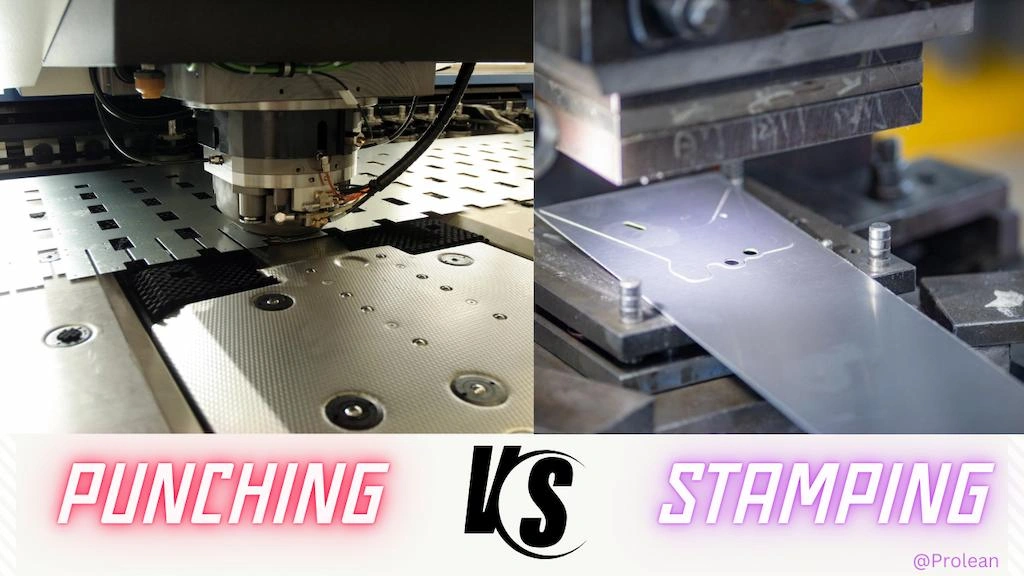
Punching and stamping are two sheet metal fabrication processes, heavily used in metalwork projects. Punching is for creating holes of different shapes, whereas stamping converts sheets into more complex shapes. Understanding the differences between these two is important to make the right decision on which method can give you precise and cost-effective results.
In this article, we will elaborate on what is metal punching, what is stamping, their key differences, considerations for choosing between them, and some application examples.
Let’s start it!
What is Sheet Metal Punching?
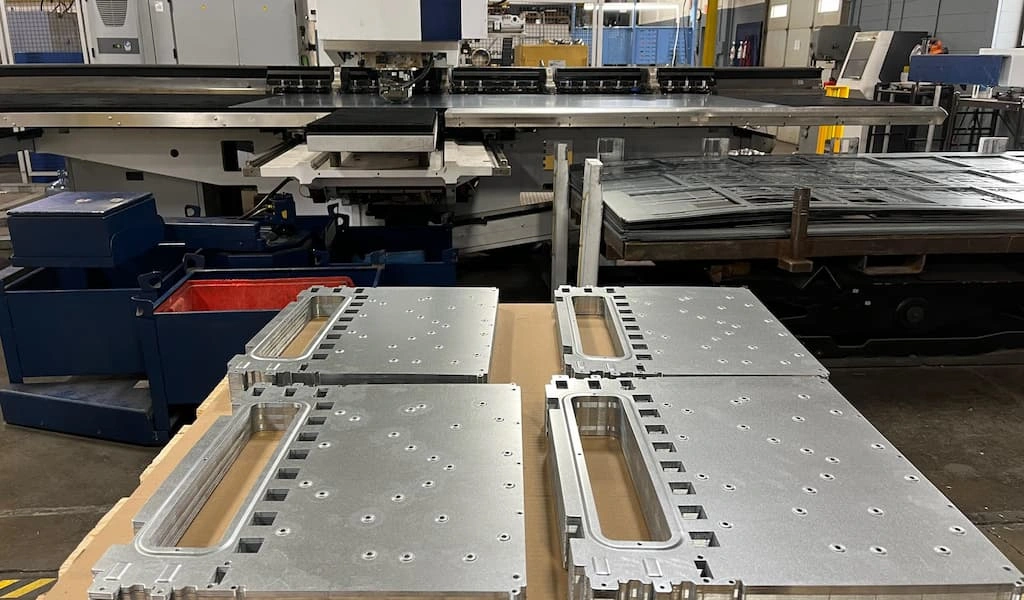
Metal punching
Punching is a simple but critical process in fabrication. It is used to make holes and simple cut-outs in metal sheets. The holes can be cylindrical, square, rectangular, or custom-shaped based on the cross-section of the punch surface. As the punch descends downwards, it shears the sheet and leaves the scrap, whereas the die supports work. Moreover, the cutting lines on the metal sheets are easily visible.
Punching a single hole at a time can not be feasible, but the CNC integrations allow for identical holes in a single cycle. It significantly reduces the time by automating the repetitive hole punching on the sheet.
You can punch holes in sheets of iron, stainless steel, brass, aluminum, and other different materials. Typically, up to 5 mm thick sheets can be easily punched, but thicker sheets of tough materials are challenging.
Try Prolean Now!
What is Metal Stamping?
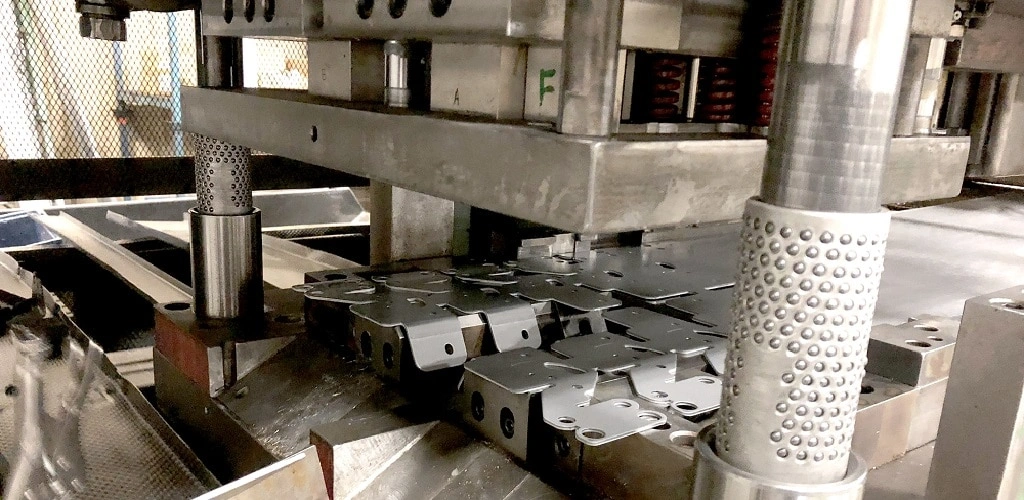
Sheet metal stamping
Metal stamping is a border term; the process is not limited to hole creation. It can make very complex sheet metal parts, such as car fenders, intricate electrical enclosures, and mounting brackets.
The sheet metal stamping process involves deforming metal sheets into the desired shape through a series of cold-forming techniques. Metal sheets are fed into a stamping press, where the die surface holds the sheet, and punches transform into the designed shape.
Stamping typically includes four different forms of fabricating operations: forming, blanking, drawing, and piercing.
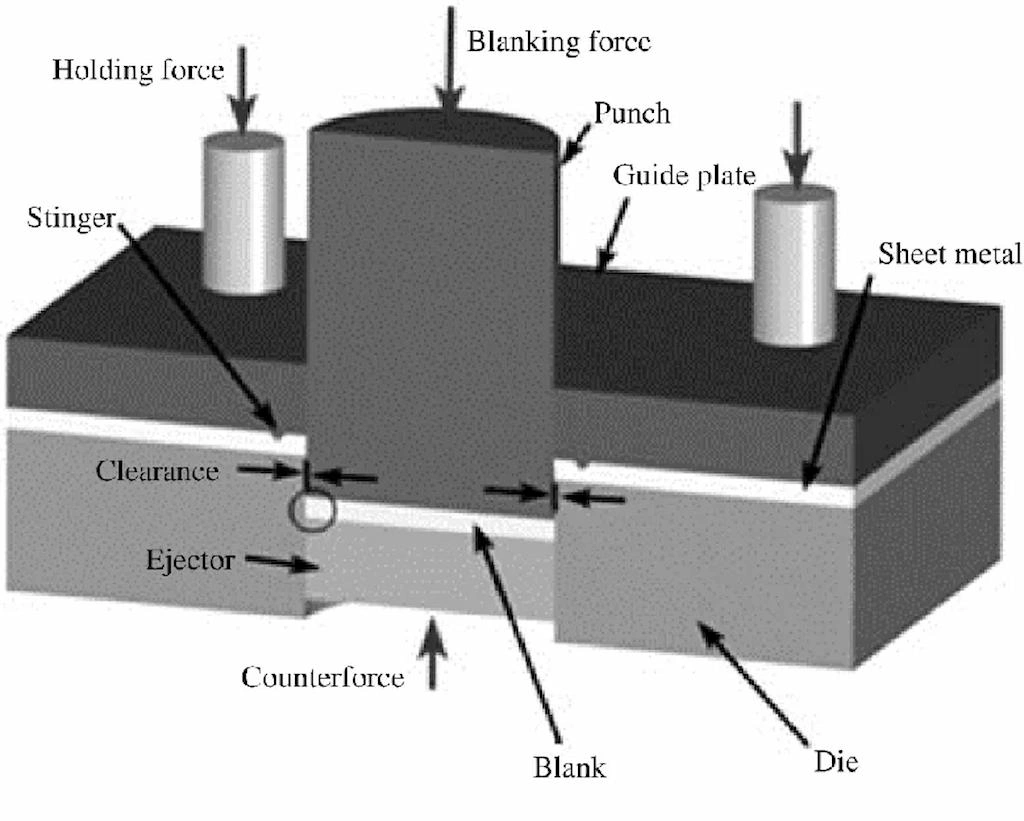
Stamping process diagram
Forming includes applying force to deform, such as by bending or folding. In baking, punches shear the sheet with a shape identical to its cross-section, where that shear-cutting scrap is the end part. In contrast, the remaining sheet is the end part of the piercing operation. Next, drawing or deep-drawing involves stretching the sheet into the die to convert it into a hollow body.
Depending on the complexity, custom metal stamping involves one or more number of these operations to create the part strictly to design.
Key Differences Between Punching and Stamping
Let’s discuss the difference between stamping and punching in various aspects, including working mechanism, complexity, tooling, and cost.
Working Mechanism
First, how to punch a hole in metal? It involves a punch and die in between the worksheet is placed. Then, the punch descends and shears the material to make a hole that matches the shape of the punch. This is mainly useful for making holes or simple cutouts on sheet metal.
Metal Stamping, as the term implies, involves more than that. Beyond punching holes, operations like bending, embossing, and flanging fall under metal stamping.
Shape and Complexity
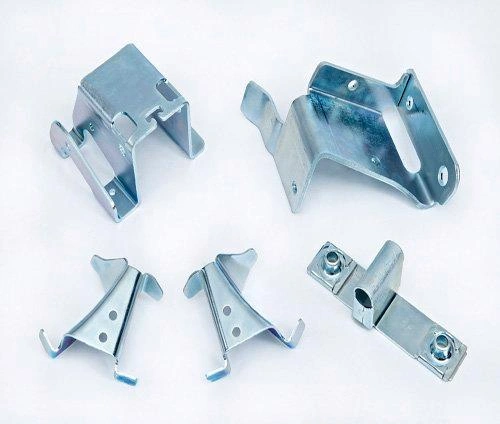
Complex metal stamping parts
The punching process provides accurate results but hole shapes are limited by the shapes of the punch and die. On the other hand, sheet metal stamping specializes in producing complex forms and shapes. It can perform various operations at once. For example, stamping can perform bending, punching, and piercing.
Required Tools
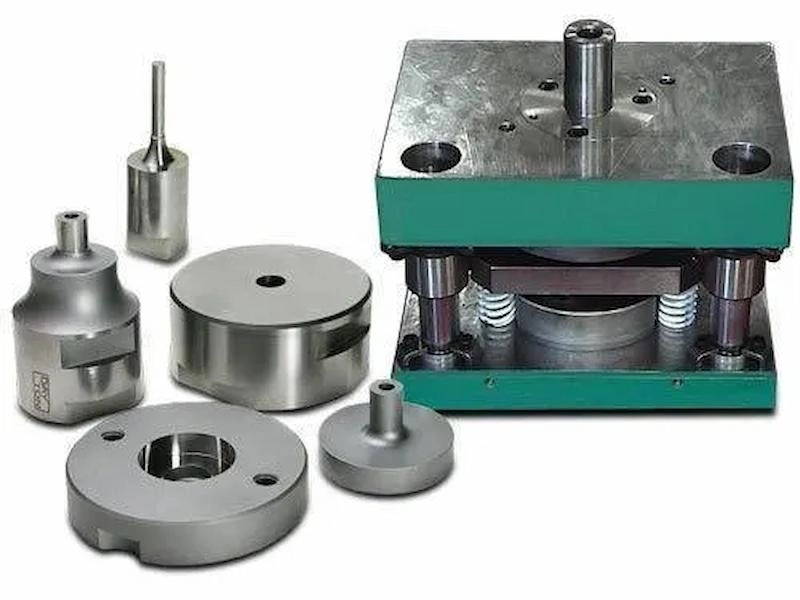
Metal punching die
A press brake machine with a specific punch and die set is required for sheet metal punching. These tools produce identical holes. On the other hand, stamping involves dies and presses designed and built to perform many different operations. Most tools are made with specialized designs and dedicated to specific parts. So, they require a large initial investment and longer lead time.
Cost Considerations
Metal punching is more cost-effective for low to medium production volumes, primarily due to its use of standardized tooling and lower setup costs. Typically, the tooling costs for metal punching range from $500 to $5,000. It is economical for less intricate designs, typically in prototypes and small-batch manufacturing.
On the other hand, the tooling cost for metal stamping is higher, $5,000 to $40,000, or even more, depending on complexity and required number of operations. However, the metal stamping cost justifies the value in large volume productions as per-part tooling cost decreases drastically.
Accuracy and Precision
Metal punching ensures ±0.05 mm precision, particularly for hole-making and simple geometric shapes, maintaining tight tolerances critical for applications in electrical enclosures and brackets. Its repeatability produces consistent quality across the batches. On the other hand, a stamping die can achieve tolerances of ±0.02 mm.
Thickness Capability
You can punch metal sheets with thicknesses from 0.1 to 5 mm, 10 mm max for soft metals. On the other hand, the compatible thickness range for thin stamping is up to 10 mm, whereas with hard tooling, you can stamp up to 75mm (3 inches) thick sheets.
Punching vs Stamping: Industrial Applications
Punching parts are popular in automotive brackets, medical equipment building, home appliances, etc.
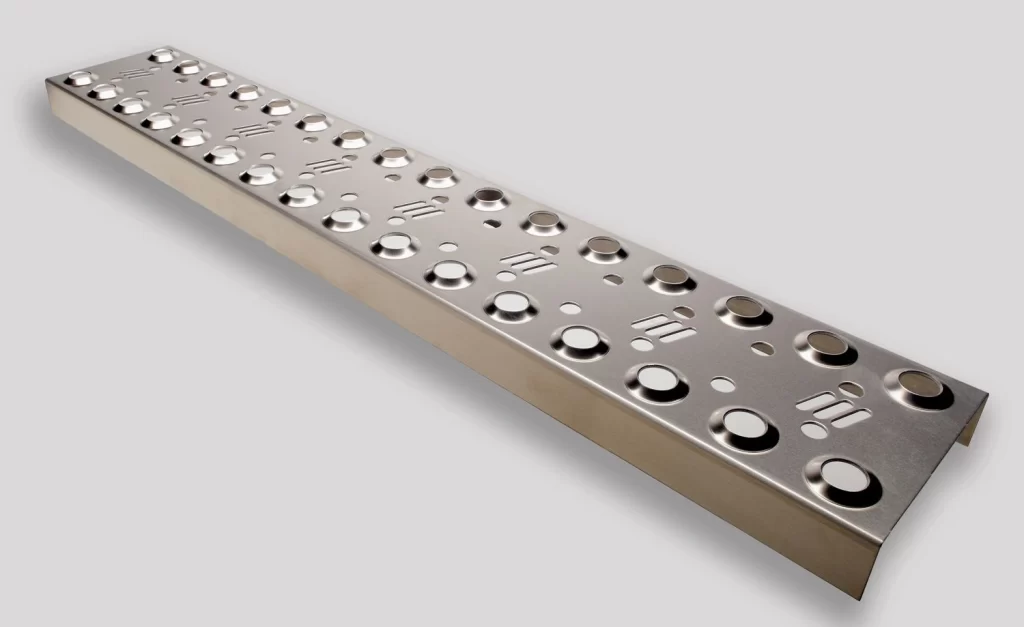
Sheet metal punching part
On the other hand, the stamping process has more diverse uses in industrial manufacturing, such as intricate panels for cars, enclosures for electronics, custom mounting fixtures, and many more.
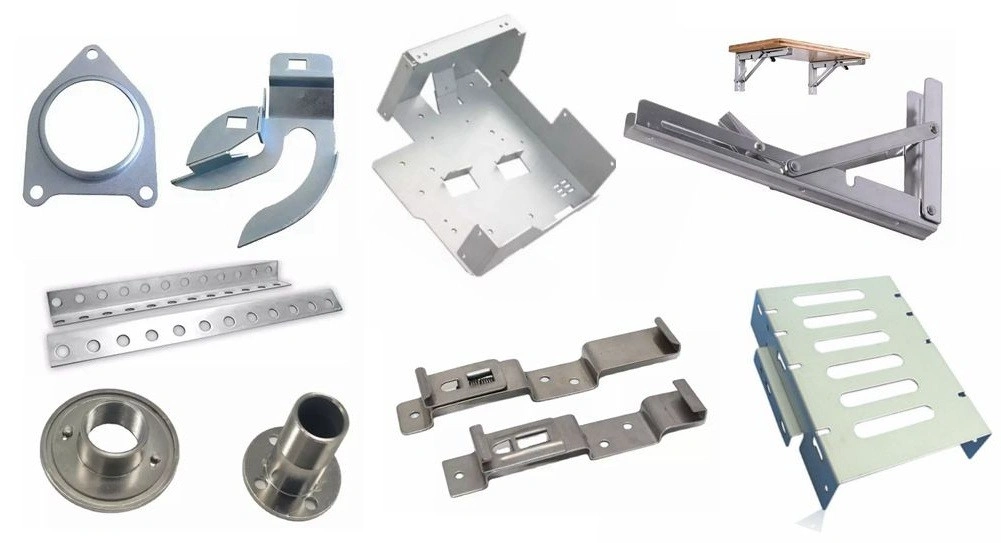
Sheet metal stamping parts
The table below outlines common application examples of stamping and punching in different industrial manufacturing sectors;
| Industry | Punching Applications | Stamping Applications |
| Automotive | Mounting holes, support structures, exhaust heat shields, patterned holes. | Body & door panels, seat rails, powertrains, suspension parts, etc. |
| Electronics | Casings, cable holes, ventilation openings, circuit board holes. | Smartphone frames, heat sinks, connector shells, battery cases. |
| Appliances | Ventilation holes, assembly points, fan grille designs, handle slots | Washing machine drums, refrigerator linings, fan blades |
| Aerospace | Rivet holes, cabin pressure panels | Instrument mounts, airframe structures, seat frames, heat shields, |
| Medical | Surgical tool slots, sterilization tray vents, frame holes, | surgical clamps, stethoscope parts, assembly brackets, equipment mounts, sensor housings |
| Construction | Truss plates, metal joist brackets, connector plates, and perforated sheets. | Window frame parts, door hinges, roofing panels, fastener components, and HVAC system parts. |
Considerations When Choosing Between Stamping vs Punching
After basic concepts and key differences, let’s discuss what are the considerations you need to make while choosing between punching and stamping for your project;
- Design of Sheet Metal Part/Product
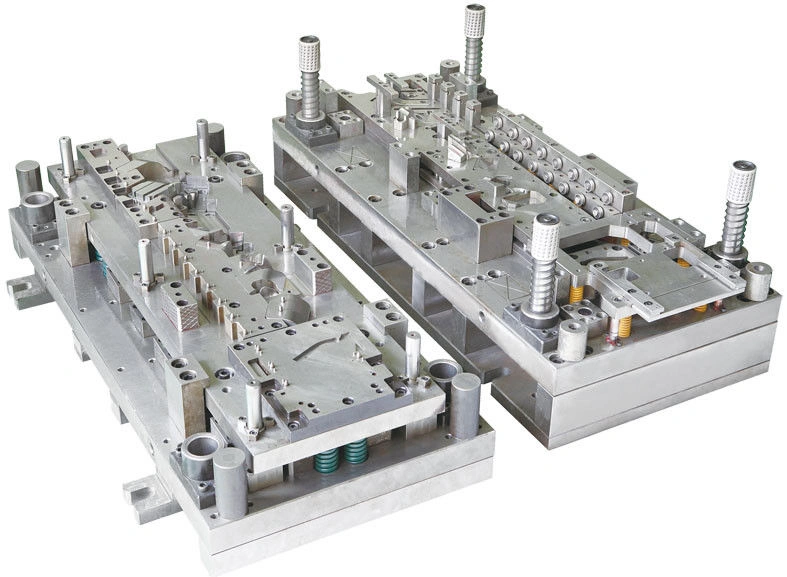
Complex metal stamping die
First, consider what Kind of Features your design includes: uniform holes and some simple forming operations like bending or intricate and multiple geometrical features. For simple designs with precise holes, punching is better. Otherwise, opt for the metal stamping method.
- Production Volume
Makin stamping die setup for a few prototypes and a small number of batches can be expensive. But if you need parts in medium to large numbers( 10,00+), tooling justifies the price. On the other hand, punching is best for prototyping and small volumes. So, consider the desired production volume in your selection process.
- Project Time Line
What is your expected delivery time for the project? CNC punching provides quicker lead than stamping due to simple die setup and production speed. In contrast, the stamping project takes longer times.
- Material Type and Thickness
Consider which metal you are using and the sheet thickness. Sheet metal punching is most effective for thinner metal sheets, typically up to 6 mm, and works well with materials like aluminum, mild steel, and other lightweight metals. On the other hand, stamping is more diverse and handles hard materials and thicker sheets, including titanium, hard steel, etc.
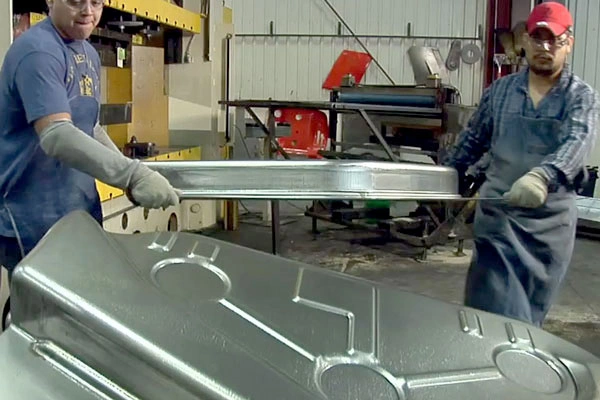
Thick metal sheet stamping
If you are looking to outsource from OEMs like China metal stamping parts manufacturers, you can discuss the criteria and considerations for whether they can match it or not—for example, production volume and expected delivery timeline.
Try Prolean Now!
Summing Up
Both punching and stamping have critical fabrication capabilities, but the application preferences are different. Your best choice between punching vs stamping mostly depends on your sheet metal design and the included features in it. If you need consistent holes, use punch press press and then proceed with the worksheet and other forming operations. But for complex shapes, you must use the stamping process.
If you are still confused, consult with expert professionals at custom sheet metal fabrication companies before deciding. You can also contact ProleanTech via our online platforms or other contacting mediums. Our engineers have more than a decade of experience in metal stamping services; they can guide you with design optimization, tooling, processing, and finishing of parts.
FAQs
Which types of projects are best suited for stamping or punching?
Punching is suitable for making identical holes and cut-outs in sheets, but stamping is best for more diverse and complex requirements, like a part with multiple geometrical features.
From a cost-effectiveness perspective, should I choose stamping or punching?
Sampling is cost-effective for high volumes, as tooling costs are distributed over and reduce the production cost. On the other hand, punching is beneficial for parts with simple designs and requiring low to medium volumes.
What is the typical lead time for punching or stamping projects?
Typically, lead times are longer for sheet metal stamping projects, and exact days depend on the complexity and how many operations it involves. But punching leads times shorter, typically a week or slightly more.
What certifications should I look for when choosing a punching or stamping manufacturer?
ISO 9001:2015 is the certification used to verify the consistent quality management systems of manufacturers, so you must look at this before outsourcing the parts. Additionally, you also need to look at other industry-specific applications like AS9100D for aerospace, ISO 13485:2016 for medical devices, etc.

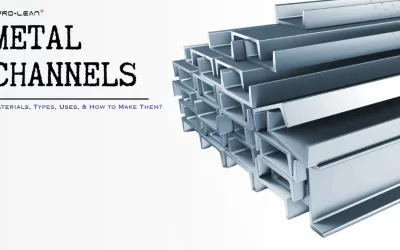
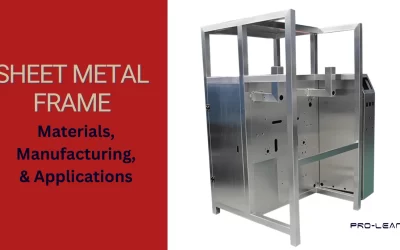
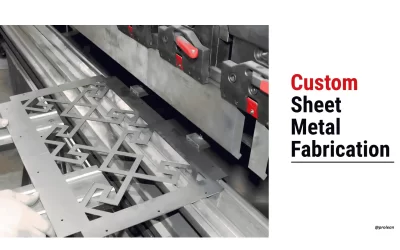
0 Comments